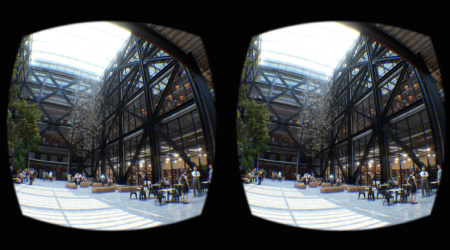The new V-Ray 3.2 for Autodesk 3ds Max introduces VR rendering capabilities and multiple V-Ray RT GPU enhancements.
V-Ray 3.2 for 3ds Max also includes improved volume rendering, distributed rendering, and global illumination.
MORE: Virtual Reality News: V-Ray goes VR with 3ds max
New VR cameras
With their two new VR camera types, you can now render stereo cube maps and spherical stereo images.
Output V-Ray scenes to popular VR formats like Oculus Rift and Samsung Gear VR quickly and easily.
New V-Ray RT GPU Features
V-Ray 3.2 for 3ds Max includes a faster and more powerful V-Ray RT GPU.

02 – V-Ray 3.2 for 3ds Max 2016 introduces VR rendering capabilities and multiple V-Ray RT GPU enhancements. Artwork by Steelblue, all rights reserved.
V-Ray RT GPU supports:
- QMC sampling using NVIDIA CUDA (resolves noise faster)
- Displacement
- Anisotropic highlights
- Composite map
- Output curves
- Texture baking
- UDIM support (MARI)
Volume rendering
New V-Ray Volume Grid adds support for OpenVDB, Field3D, and Phoenix FD volume grid formats.
This allows you to import and render data from popular effects applications like Houdini and FumeFX.
Distributed rendering
- Add or remove distributed rendering nodes on the fly
Global Illumination
- Updated Light Cache algorithm removes light leaks and improves animation
Geometry
- New preview types for proxy objects – includes mesh simplification for optimized proxy display
- Faster rendering of hair and fur
- Intel Embree support for 3ds Max Hair & Fur and V-Ray Fur
3ds Max 2016
- Full support for new Physical Camera – co-developed with 3ds Max team
- Support for new Physical Camera Exposure Control
- V-Ray Lens Analysis Utility adds support for the 3ds Max Physical Camera
Availability
V-Ray 3.2 for 3ds Max is a free update for all V-Ray 3.0 customers. Log in at chaosgroup.com to download.





Reader Comments
Comments for this story are closed